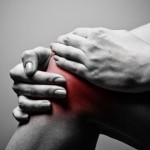I have made two tools that I’ve developed available to you for use in your practice. One of these, the CPEI, measures the pain experience. The other—the Pain Management Inventory (PMI)—indexes what management methods the person is using and rates how often these are used and how helpful they are.4 These, along with instructions for scoring, may be downloaded from my Web site (http://myweb.twu.edu/~gdavis).
I know that all providers want to help their patients with their pain. I hope that my musings are helpful as you strive to meet this important goal in the treatment of patients with arthritis.
ad goes here:advert-1
ADVERTISEMENT
SCROLL TO CONTINUE
Dr. Davis is professor of nursing at Texas Women’s University in Denton and a member of the TR editorial board.
References
- Davis GC. Revision of the chronic pain experience instrument (CPEI). Scientific Abstracts 1993; Abstract 67 (p. S343), 28th National Scientific Meeting, Arthritis Health Professions Association.
- Davis GC. The meaning of pain management: A concept analysis. ANS Adv Nurs Sci. 1992;15:77-86.
- Lorig K, Fries JF. The Arthritis Helpbook. 4th ed. Cambridge, Ma.: Da Capo Press; 2006.
- Davis GC, Atwood JR. The development of a pain management inventory for patients with arthritis. J Adv Nurs. 1996;24:236-243.


